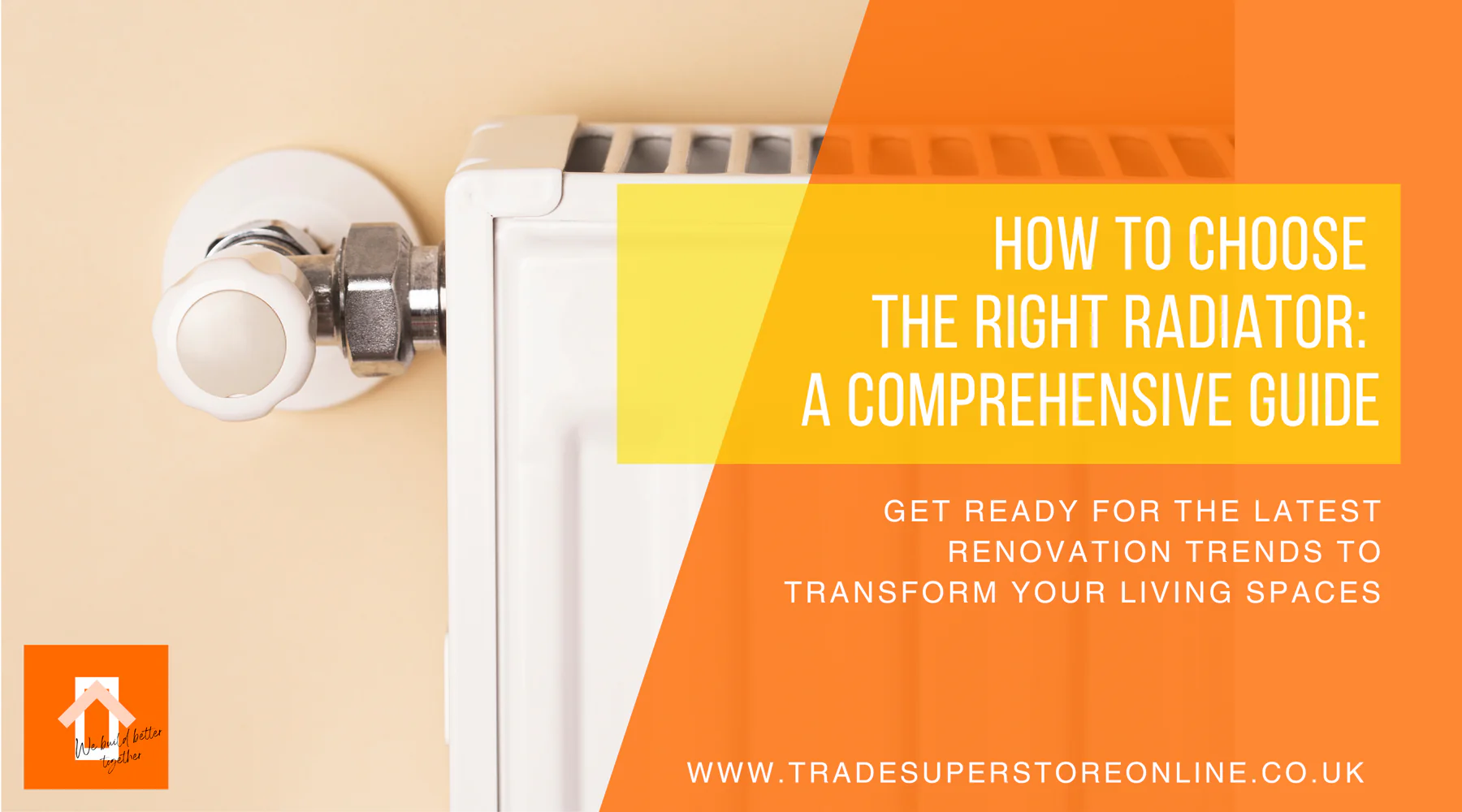
How to Choose the Right Radiator: A Comprehensive Guide
Choosing a new radiator for your home is an essential step in improving your heating system and enhancing comfort. With so many radiator types and heating types available, finding the perfect option can feel overwhelming. This guide will help you navigate the choices, offering insights on electric radiators, dual-fuel options, radiator sizing, and design considerations. Whether you’re embarking on a major home improvement project or simply upgrading your heating, this blog has everything you need to know.

Start with the Basics: Understand Your Heating System
Before selecting a radiator, it’s crucial to consider how your home is heated. Different heating types influence which radiators are compatible with your system and suit your needs.
1. Central Heating Radiators
- Central heating systems are powered by a boiler that heats water, which is then pumped through a network of pipes to heat the radiators in your home.
- Ideal if you already have a central heating system installed, as replacement radiators can integrate seamlessly.
- Available in a wide range of designs, from traditional to contemporary.
2. Electric Radiators
- These radiators connect directly to the mains, either via a plug socket or hardwired to the electrical system.
- Unlike central heating radiators, electric radiators are filled with thermodynamic fluids such as oil or glycol, making them efficient and quick to heat up.
- Perfect for homes without a central heating system or as standalone heaters for specific rooms.
3. Dual Fuel Radiators
- Combining the best of both worlds, dual fuel radiators operate with central heating but can also function independently using electricity.
- Great for variable British weather, as you can use the radiator in warmer months without turning on the entire central heating system.

Determining the Right Size Radiator
Selecting the correct radiator size is essential to ensure adequate heating. The main factor to consider is the size of the room you want to heat.
BTU Calculations
Radiator heat output is measured in BTUs (British Thermal Units). The larger the room, the higher the BTU requirement. Online calculators or professional installers can help determine the BTU output needed for your space.
Wall Space and Placement
While the physical size of the radiator matters, its location is equally important. Consider these points:
- Maximize heat efficiency by placing radiators under windows or along external walls.
- For smaller rooms, vertical radiators save wall space while providing ample heat.
Exploring Radiator Types and Designs
Modern radiators come in various configurations and styles to suit different needs and aesthetics. Here’s a breakdown of popular radiator types:
Panel Radiators
- Single Panel Radiators: Slim and space-saving, these radiators are perfect for smaller rooms or where wall space is limited.
- Double Panel Radiators: With added fins and convection tubes, these radiators offer greater heat output, ideal for larger spaces.
Horizontal vs. Vertical Radiators
- Horizontal Radiators: The traditional choice, offering a broad range of styles and sizes. They’re widely available and generally more affordable.
- Vertical Radiators: A modern alternative, these radiators are great for making a design statement or heating rooms with limited horizontal wall space.
Column Radiators
- Also known as Victorian or traditional radiators, these feature tubular columns and a distinctive aesthetic.
- While often more expensive, column radiators are both functional and decorative, making them a popular choice for period homes or as a statement piece in modern interiors.
Heated Towel Rails
- Designed primarily for bathrooms, these radiators serve a dual purpose: warming towels and heating the room.
- Typically electric, they’re easy to install and can be switched on independently from the central heating system.

Factors to Consider When Choosing a New Radiator
To narrow down your options, keep the following key considerations in mind:
1. Energy Efficiency
- Look for radiators with advanced heating technologies, such as thermostatic radiator valves (TRVs) and smart controls, which allow precise temperature regulation.
2. Aesthetic Appeal
- Radiators are no longer just functional—they can be a design feature. Whether you prefer sleek minimalism, industrial chic, or classic styles, there’s a radiator to match your taste.
3. Budget
- Your budget will influence your choice of material, design, and type. Electric and dual-fuel radiators may have higher upfront costs but can offer savings on energy bills in the long term.
4. Installation Requirements
- Some radiators, like column or vertical types, may require additional installation work or structural support. Ensure your walls can accommodate your chosen design.
Final Thoughts
Choosing the right radiator is a crucial step in upgrading your home’s heating system and enhancing its comfort and style. By considering your heating type, room size, and design preferences, you’ll find a radiator that perfectly meets your needs. Whether you opt for the timeless charm of column radiators, the practicality of electric radiators, or the modern efficiency of dual fuel options, the possibilities are endless.
For more home improvement inspiration and tips, keep exploring ways to make your space warmer, cozier, and more efficient. Your perfect radiator is just one decision away!
